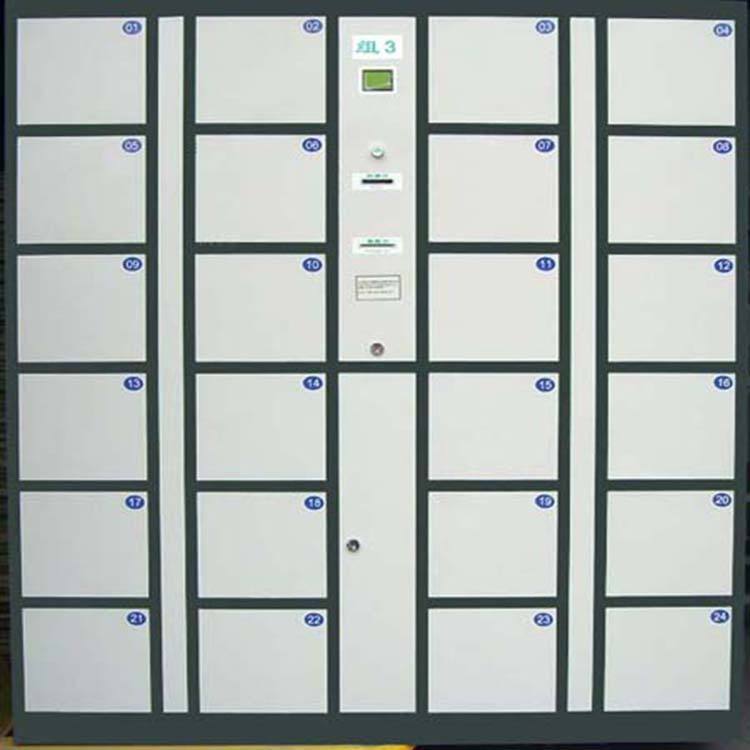How to replace the printing paper in the supermarket locker, most of the supermarket lockers are now bar code, because the bar code is relatively simple, just need to save, then scan the code when picking things, though, but after all, Bar code paper is limited, and the daily flow of supermarkets is still quite a lot, so it is often necessary to replace the printing paper. At this point, managers must be familiar with this step, the following small series will teach you. Supermarket lockers replace printing paper (only administrators have this right): In the paper runs out or the printer is not installed, the package of the operation when the key press, the system and a liquid crystal voice prompt "paper out of paper, add paper." And the “+†symbol is displayed in the lower left corner of the LCD screen to prompt the administrator to add paper. The administrator replaces the paper as required, otherwise the package can only be taken. The replacement steps are as follows: 1. The administrator opens the lower door of the central main control cabinet with the key, and then has a latch in the lower left corner of the upper door near the position of the scanner, and hardly pushes the top latch to open the door. 2. Remove the paper shaft first, then pull out the thermal paper clockwise as shown below ( 3 ), then place the paper shaft, pay attention to the correct paper exit direction, and cut the paper end with scissors. 3. Pull the printer out and push the paper into the paper feed port according to the figure ( 4 ). Pay attention to the correct direction. After the paper feed has the paper, the system will automatically control the roll paper. Pay attention to observe whether the paper enters the pass. If it is flat, if there are paper scraps in the paper inlet and the knife edge, it should be cleaned up in time to avoid paper jam or affect the print quality. 4. Then press the printer paper feed button S2 on the side of the main control board , the system will automatically print out some box status information, and cut the paper after several lines of paper. 5, try to press the key, a password to see whether the normal paper, if not normal, for example the edge of a paper jam, the paper put pulled out again after leveling add paper until the paper properly. 6. The installation process requires the operator to practice repeatedly. If there is any problem, please contact the manufacturer in time. The above is all the steps to replace the printing paper in the supermarket locker. If you have any questions, you can always do so. Diagnostic reagents can be divided into two categories: in vivo diagnostic reagents and in vitro diagnostic reagents. It is mostly a reagent for detection by the reaction between antigen and antibody. Urine Rapid Test Kit,Rapid Test Kit 6-Panel,Toxoplasma rapid test kits,Fecal Occult Blood Test Jilin Sinoscience Technology Co. LTD , https://www.jlgkscience.com
A: Classification of in vitro diagnostic reagents:
1. In vitro biodiagnostic reagents managed as drugs include:
1. Blood type and tissue type reagents;
2. Microbial antigen, antibody and nucleic acid detection reagents;
3. Tumor marker reagents;
4. Immunohistochemistry and human tissue cell reagents;
5. Human genetic testing reagents;
6. Biochips;
7. Allergy diagnostic reagents.
2. In vitro reagents managed as medical devices include:
1. Clinical basic test reagents;
2. Clinical chemistry reagents;
3. Blood gas and electrolyte determination reagents;
4. Vitamin determination reagents;
5. Cell histochemical stains;
6. Autoimmune diagnostic reagents;
7. Microbiological test reagents.
B: According to medical test items, clinical diagnostic reagents can be roughly divided into clinical chemical test reagents, immunology and
Serological testing reagents, hematological and cytogenetic testing reagents, microbiological testing reagents, body fluid excretion
Detection reagents, genetic diagnosis reagents, etc. Among them, the market share of clinical chemistry
The largest, close to 34%; followed by the immunology market, accounting for about 29%. Novel immunodiagnostic reagents and genetic diagnostic tests
The reagent was developed in the late 1980s, and it is the most common diagnostic reagent for all current diagnostic reagents, regardless of technology or market.
The fastest growing product.